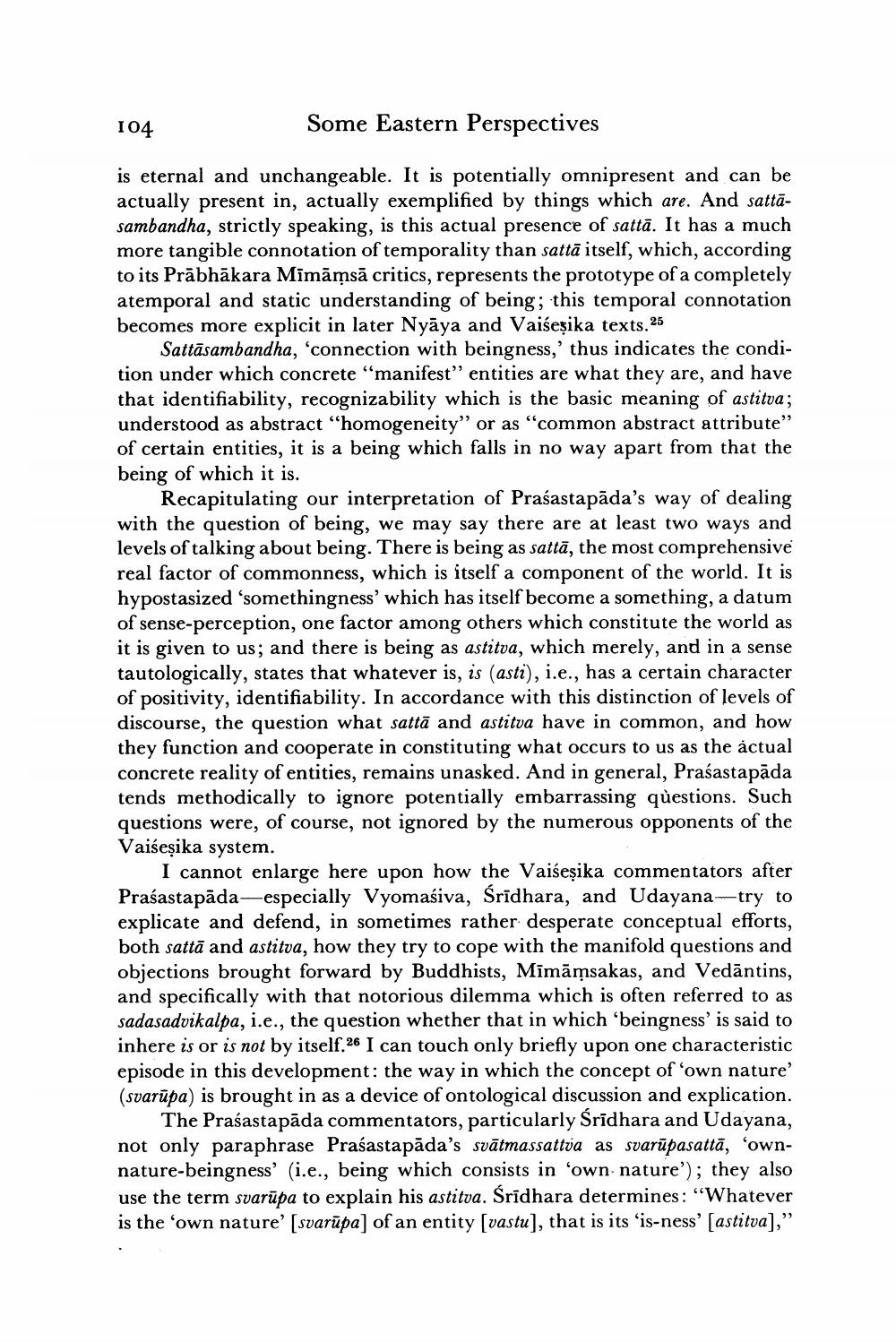________________
104
Some Eastern Perspectives
is eternal and unchangeable. It is potentially omnipresent and can be actually present in, actually exemplified by things which are. And sattāsambandha, strictly speaking, is this actual presence of satta. It has a much more tangible connotation of temporality than satta itself, which, according to its Prabhakara Mīmāmsā critics, represents the prototype of a completely atemporal and static understanding of being; this temporal connotation becomes more explicit in later Nyāya and Vaiśesika texts.25
Sattasambandha, 'connection with beingness,' thus indicates the condition under which concrete "manifest" entities are what they are, and have that identifiability, recognizability which is the basic meaning of astitva; understood as abstract "homogeneity" or as "common abstract attribute" of certain entities, it is a being which falls in no way apart from that the being of which it is.
Recapitulating our interpretation of Prasastapāda's way of dealing with the question of being, we may say there are at least two ways and levels of talking about being. There is being as satta, the most comprehensive real factor of commonness, which is itself a component of the world. It is hypostasized 'somethingness' which has itself become a something, a datum of sense-perception, one factor among others which constitute the world as it is given to us; and there is being as astitva, which merely, and in a sense tautologically, states that whatever is, is (asti), i.e., has a certain character of positivity, identifiability. In accordance with this distinction of levels of discourse, the question what sattā and astitva have in common, and how they function and cooperate in constituting what occurs to us as the actual concrete reality of entities, remains unasked. And in general, Prasastapāda tends methodically to ignore potentially embarrassing questions. Such questions were, of course, not ignored by the numerous opponents of the Vaiśeşika system.
I cannot enlarge here upon how the Vaiseṣika commentators after Prasastapāda—especially Vyomasiva, Śrīdhara, and Udayana-try to explicate and defend, in sometimes rather desperate conceptual efforts, both satta and astitva, how they try to cope with the manifold questions and objections brought forward by Buddhists, Mīmāmsakas, and Vedāntins, and specifically with that notorious dilemma which is often referred to as sadasadvikalpa, i.e., the question whether that in which 'beingness' is said to inhere is or is not by itself.26 I can touch only briefly upon one characteristic episode in this development: the way in which the concept of 'own nature' (svarupa) is brought in as a device of ontological discussion and explication. The Prasastapāda commentators, particularly Śrīdhara and Udayana, not only paraphrase Prasastapāda's svātmassattva as svarupasattā, 'ownnature-beingness' (i.e., being which consists in 'own nature'); they also use the term svarupa to explain his astitva. Śrīdhara determines: "Whatever is the 'own nature' [svarupa] of an entity [vastu], that is its 'is-ness' [astitva],"




